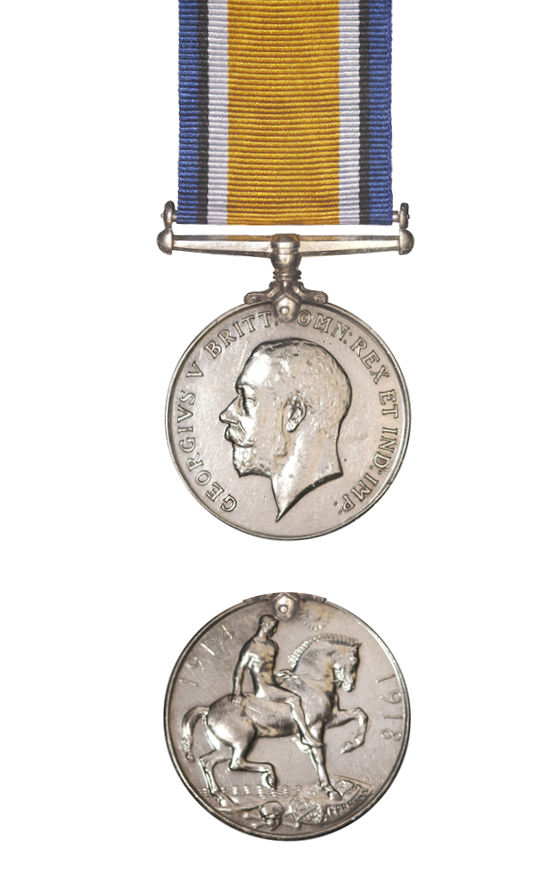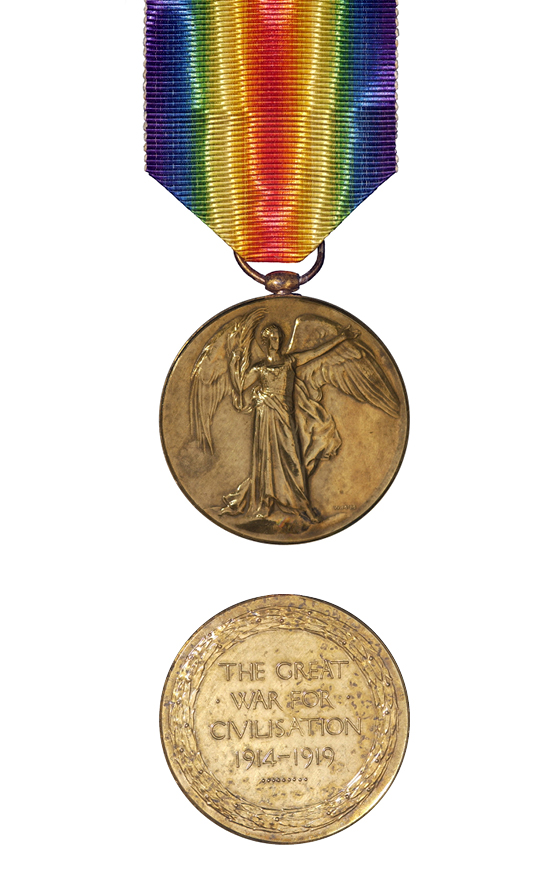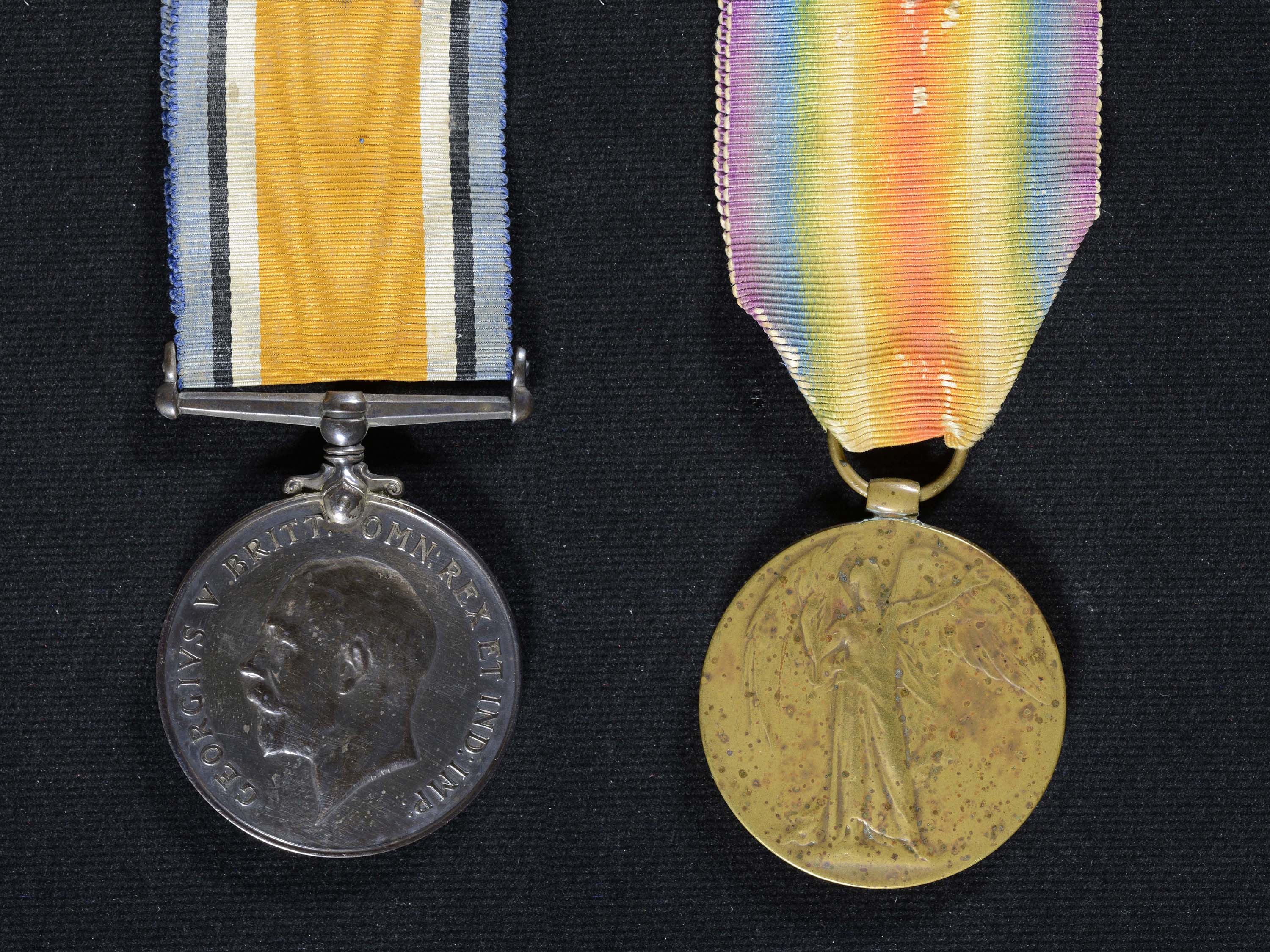

Display No. 3J
MIDDLETON, Harold
Harold Middleton joined the Royal Navy in November 1915 as a Boy 2nd Class. He underwent basic training in the training ship HMS Powerful, and then as a signalman in the shore establishments HM Ships Ganges and Vivid I.
During the First World War, Middleton served as a signalman on numerous ships spending the majority of his time in HMS Temeraire and the minesweeping sloop HMS Daphne, for which he was awarded the Mine Clearance Badge. After the war he continued to serve in destroyers and ashore. He was discharged from the Royal Navy in April 1920.
Awarded medal(s)
Medal Description [Left to Right]:
The British War Medal

The British War Medal was instituted in 1919 to recognise the successful conclusion of the First World War (1914-1918). Its coverage was later extended to recognise service until 1920, recognising mine clearing operations at sea, and participation in operations in North and South Russia, the eastern Baltic, Siberia, the Black Sea and the Caspian Sea.
The Victory Medal

The Victory Medal was awarded in the First World War to all those who had already qualified for the 1914 Star or the 1914-15 Star, and to most persons who had already qualified for the British War Medal. The Victory Medal was awarded to all New Zealand troops serving overseas, except for those who arrived in Samoa after 30 August 1914 and those serving in Great Britain only. It has a unique double rainbow ribbon.
A bronze spray of oak leaves on the medal ribbon denotes that the recipient was Mentioned in Despatches during the period that the medal recognises. To be Mentioned in Despatches a member of the armed forces has had their name mentioned in an official report, written by a superior officer, and sent to a higher command. The report would describe the individual’s gallant or meritorious action in the face of the enemy.

